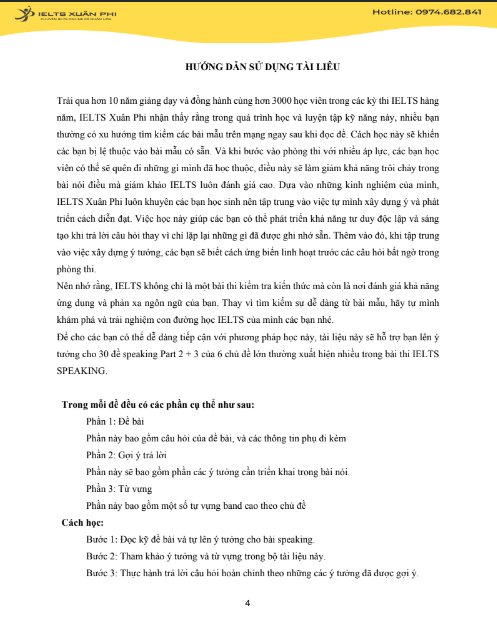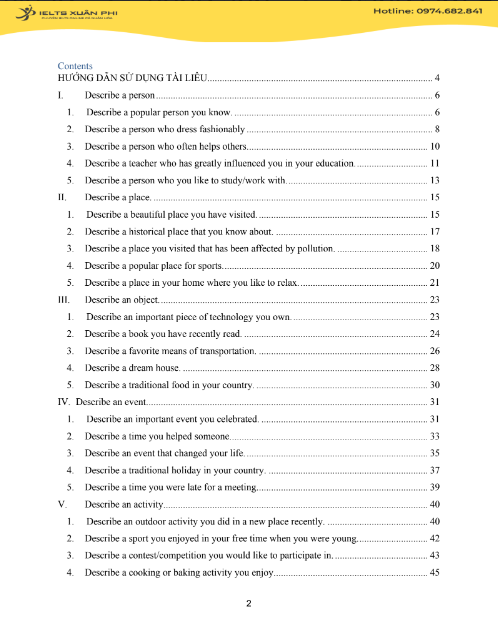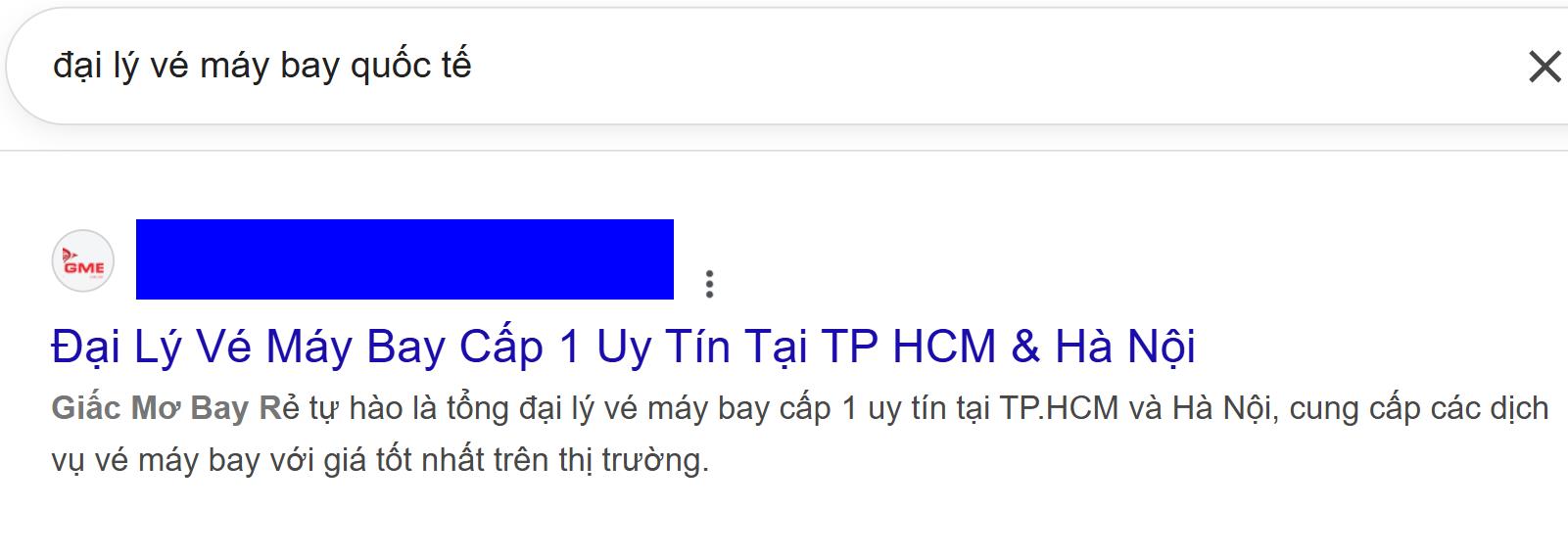


Part 3
| STT | Question | Suggestion |
|---|---|---|
| 1 | What are the advantages and disadvantages of being popular? | Advantages:– Make a good fortune.- Have a significant influence and can use it to sway public opinion.- Open up many opportunities for career advancement.Disadvantages:– Invasion of privacy.- Public scrutiny and criticism.- Pressure to maintain a certain image or meet high expectations. |
| 2 | Why are some students at school more popular than others? | – Physical appearance.- Academic achievement.- Good social skills.- Special talents ⇒ sport, music. |
| 3 | Why are some people popular for many years while others are only popular for a short time? | – Possess genuine talents.- Adapt to changing trends and public interests.- Maintain a positive public image. |
| 4 | What are some ways in which this person has used their popularity for good? | – Initiate fundraising.- Choose to endorse eco-friendly products.- Use their social platforms to raise awareness about social issues. |
| 5 | How has the concept of popularity changed with the advent of social media? | – Reach a wider audience.- Gain instant fame.- Be quantified by likes, shares, followers on social media platforms. |
VOCABULARY
- Social butterfly: Người hoà đồng, thân thiện
- Household name: Người nổi tiếng được biết đến rộng rãi
- Media darling: Người mà truyền thông yêu thích và thường xuyên đưa tin
- Lead a glamorous lifestyle: Sống cuộc sống hào nhoáng
- Crowd-puller: Người có khả năng thu hút đám đông lớn
- Rising star: Ngôi sao mới nổi
2. Describe a person who dresses fashionably
| Main idea | Detail |
|---|---|
| Who this person is | My Tam ⇒ renowned pop singer in Vietnam ⇒ exceptional fashion sense. |
| How you know this person | Several years ago ⇒ browsing Youtube ⇒ came across her song ⇒ impressed by her beautiful voice and fabulous fashion style ⇒ became her fan. |
| What kinds of clothes this person likes to wear | – Wear a variety of clothes ⇒ from glamorous, glittering dresses on stage to casual outfits in her daily life.- Combines traditional Vietnamese elements with Western styles ⇒ distinct look. |
| Explain why you think this person dresses well | – Ability to mix and match her clothes ⇒ go well with each other.- Wear clothes ⇒ reflect themes of music ⇒ tell a story through not just her songs but also through her clothes.- Possess an accessorizing skill ⇒ spice up her outfits. |
Part 3
| Question | Suggestion |
|---|---|
| Do you think online shopping will replace in-store shopping in the future? Why? | No.- Try on clothes, test out products, and feel the texture.- Serves as a social activity on weekends. |
| Are women more fashionable than men? Why? | Yes.- Social expectations.- Fashion industry focus.- Care more about their appearances. |
| Do you think fashion is a form of self-expression? Why or why not? | Yes.- Reflect personality.- Show creativity.- Indicate personal mood. |
| What are the benefits and drawbacks of following fashion trends? | Benefits:– Expression of individuality.- Confidence enhancement.Drawbacks:– Environmental impact.- Financial burden. |
| Is it possible to look good without spending lots of money on clothes? | Yes.- Focus on fit.- Know how to mix and match.- Accessorize strategically.- Be confident. |
VOCABULARY
- Dressed to the nines: Mặc rất đẹp và thời trang
- Trendsetter: Người tạo ra xu hướng mới mà người khác theo đuổi
- Clothes horse: Người rất thích mặc đồ đẹp và mua nhiều quần áo thời trang
- Snappy: Hợp mốt, có phong cách riêng
- Polished: Gọn gàng, chỉn chu và thanh lịch
- Fashion-forward: Người đi đầu xu hướng
3. Describe a person who often helps others.
| Main idea | Detail |
|---|---|
| Who the person is | Quang Linh ⇒ a Vietnamese vlogger ⇒ garner much attention for meaningful content ⇒ philanthropic work in Angola. |
| How you know this person | Two years ago ⇒ came across a video about his voluntary journey ⇒ deeply moved by his humanitarian efforts ⇒ follow him. |
| What this person does to help people | – Raise funds to help dig wells ⇒ provide clean water.- Build care homes for underprivileged families.- Use donations to provide basic necessities.- Teach self-sustaining skills like farming and handicrafts. |
| Why this person likes to help others | – Empathetic and compassionate nature.- Social responsibility.- Satisfaction and fulfillment from helping others. |
Part 3
| STT | Question | Suggestion |
|---|---|---|
| 1 | What are some ways that neighbors can help each other? | – Offer immediate assistance in emergencies.- Take care of homes when someone is away.- Provide a listening ear. |
| 2 | Has community spirit increased or decreased? | Less community spirit:- Urbanization ⇒ less engagement.- Embrace individuality more.- Social media ⇒ fewer interactions. |
| 3 | Why do some people not like to help others? | – Fear being taken advantage of.- Lack time, money, or energy.- Lack empathy. |
| 4 | Should children be taught to help others? | Yes.- Develop social responsibility.- Improve communication and collaboration.- Strengthen relationships. |
| 5 | How can schools and families encourage helpful behavior? | – Be role models.- Organize charitable events.- Hold conversations about helpfulness. |
VOCABULARY
- Go-to person: Người luôn giúp khi cần
- Heart of gold: Rất tốt bụng và nhân hậu
- Lend an ear: Sẵn lòng lắng nghe
- Pay it forward: Giúp người khác không mong đáp trả
- Magnanimous: Rộng lượng
- Carry out good deeds: Làm việc tốt
4. Describe a teacher who has greatly influenced you
| Main idea | Detail |
|---|---|
| Who is the teacher | Mrs Linh ⇒ English teacher |
| What kind of teacher | – Came across as tough.- Always kept a straight face.- Passionate and dedicated. |
| How the teacher taught | – Out-of-the-box approach ⇒ discussions, debates, games. |
| Why the teacher influenced you | – Instilled lifelong love for English.- Encouraged creativity and free expression.- Listened to problems and offered advice.- Motivated and encouraged. |
Part 3
| STT | Question | Suggestion |
|---|---|---|
| 1 | Will computers replace teachers? | No.- Teachers give emotional support.- Explain concepts creatively.- Maintain discipline. |
| 2 | How to make lessons interesting? | – Use interactive methods.- Games, quizzes, puzzles.- Include short breaks. |
| 3 | Will education change? | Yes.- More technology.- More online learning.<br- Emphasize soft skills.- Student-centered. |
| 4 | Importance of teacher-student relationship | – Create positive learning environment.- Motivate students.- Support emotional development. |
| 5 | Qualities of a good teacher | – Passion.- Communication.- Patience.- Role model. |
VOCABULARY
- Served as a role model
- A wealth of knowledge
- Lit a fire within me
- Brought the subject to life
- Instill a love for learning
5. Describe a person who you like to study/work with
| Main idea | Detail |
|---|---|
| Who this person is | An ⇒ my high school classmate ⇒ buddy. |
| How long you’ve known this person | Since grade 10 ⇒ sat next to her ⇒ hit it off. |
| What kind of person | – Adorable appearance.- Intelligent and hardworking.- Aptitude for drawing.- Good at analyzing ideas.- Patient and humble. |
| Why you like to study/work with her | – Same dream ⇒ both love fashion ⇒ want a clothing store.- Excellent drawing skills ⇒ crucial for design.- Positive and enthusiastic attitude. |
Part 3
| STT | Question | Suggestion |
|---|---|---|
| 1 | What kinds of co-workers do people like? | – Collaborative.- Honest.- Problem-solvers.- Competent. |
| 2 | Should managers be friends with subordinates? | Should: empathy, communication, trust.Shouldn’t: hard to give feedback, seen as unprofessional. |
| 3 | Skills vs recognition | – Skills ⇒ job security.- Recognition ⇒ motivation and productivity. |
| 4 | Learn alone or with others? | Alone: focus, independence.Group: perspectives, teamwork, motivation. |
| 5 | Similar or diverse working styles? | Similar: smooth coordination.Diverse: innovation, new ideas. |
VOCABULARY
- Think outside the box
- On the same wavelength
- Bounce ideas off each other
- Have a strong work ethic
- Mutual respect
- Show impeccable professionalism
Part 3
STT | Question | Suggestion
— | — | —
1 | What are the advantages and disadvantages of being popular? | Advantages: - Make a good fortune.
- Have a significant influence and can use it to sway public opinion.
- Open up many opportunities for career advancement.
Disadvantages:
- Invasion of privacy.
- Public scrutiny and criticism.
- Pressure to maintain a certain image or meet high expectations.
2 | Why are some students at school more popular than others? | – Physical appearance.
- Academic achievement.
- Good social skills.
- Special talents ⇒ sport, music.
3 | Why are some people popular for many years while others are only popular for a short time? | – Possess genuine talents.
- Adapt to changing trends and public interests.
- Maintain a positive public image.
4 | What are some ways in which this person has used their popularity for good? | – Initiate fundraising.
- Choose to endorse eco-friendly products.
- Use their social platforms to raise awareness about social issues.
5 | How has the concept of popularity changed with the advent of social media? | – Reach a wider audience.
- Gain instant fame.
- Be quantified by likes, shares, followers on social media platforms.
8
VOCABULARY
- Social butterfly: Người hoà đồng, thân thiện
- Household name: Người nổi tiếng được biết đến rộng rãi
- Media darling: Người mà truyền thông yêu thích và thường xuyên đưa tin
- Lead a glamorous lifestyle: Sống cuộc sống hào nhoáng
- Crowd-puller: Người có khả năng thu hút đám đông lớn
- Rising star: Ngôi sao mới nổi
2. Describe a person who dress fashionably
| Main idea | Detail |
|---|---|
| Who this person is | My Tam ⇒ renowned pop singer in Vietnam ⇒ exceptional fashion sense. |
| How you know this person | Several years ago ⇒ browsing Youtube ⇒ came across her song ⇒ impressed by her beautiful voice and fabulous fashion style ⇒ became her fan. |
| What kinds of clothes this person likes to wear | – Wear a variety of clothes ⇒ from glamorous, glittering dresses on stage to casual outfits in her daily life. |
- Combines traditional Vietnamese elements with Western styles ⇒ distinct look.
Explain why you think this person dresses well | – Ability to mix and match her clothes ⇒ go well with each other. - Wear clothes ⇒ reflect themes of music ⇒ tell a story through not just her songs but also through her clothes.
- Possess an accessorizing skill ⇒ spice up her outfits.
9
Part 3
| Question | Suggestion |
|---|---|
| Do you think online shopping will replace in-store shopping in the future? Why? | No. |
- Try on clothes, test out products, and feel the texture.
- Serves as a social activity on weekends.
Are women more fashionable than men? Why? | Yes.
- Social expectations.
- Fashion industry focus.
- Care more about their appearances.
Do you think fashion is a form of self-expression? Why or why not? | Yes.
- Reflect personality.
- Show creativity.
- Indicate personal mood.
Benefits and drawbacks of following fashion trends | Benefits:
- Expression of individuality.
- Confidence enhancement.
Drawbacks:
- Environmental impact.
- Financial burden.
Is it possible to look good without spending lots of money on clothes? | Yes.
- Focus on fit.
- Know how to mix and match.
- Accessorize strategically.
- Be confident.
VOCABULARY
- Dressed to the nines: Mặc rất đẹp và thời trang
- Trendsetter: Người tạo ra xu hướng mới
- Clothes horse: Người rất thích mặc đồ đẹp và mua nhiều quần áo
- Snappy: Hợp mốt, phong cách
- Polished: Gọn gàng, chỉn chu
- Fashion-forward: Người đi đầu xu hướng
3. Describe a person who often helps others.
| Main idea | Detail |
|---|---|
| Who the person is | Quang Linh ⇒ Vietnamese vlogger ⇒ garner attention for meaningful content ⇒ philanthropic work in Angola. |
| How you know this person | Two years ago ⇒ came across a video about his voluntary journey ⇒ deeply moved ⇒ follow him. |
| What this person does to help people | – Raise funds to dig wells ⇒ provide clean water. |
- Build care homes for underprivileged families.
- Use donations to provide basic necessities.
- Teach self-sustaining skills like farming + handicrafts.
Why this person likes to help others | – Empathetic and compassionate. - Social responsibility.
- Satisfaction from helping others.
Part 3
| STT | Question | Suggestion |
|---|---|---|
| 1 | Ways neighbors can help each other | – Offer immediate assistance. |
- Watch each other’s homes.
- Provide emotional support.
2 | Has community spirit increased or decreased? | Decreased: - Urbanization.
- Individualism.
- Social media reduces interaction.
3 | Why do some people not like to help others? | – Fear of being taken advantage of. - Lack of time, money, energy.
- Lack of empathy.
4 | Should children be taught to help others? | Yes. - Build social responsibility.
- Improve communication + collaboration.
- Strengthen relationships.
5 | How can schools/families encourage helpful behavior? | – Be role models. - Organize charity events.
- Discuss importance of helping.
VOCABULARY
- Go-to person: Người đáng tin cậy
- Heart of gold: Rất nhân hậu
- Lend an ear: Sẵn lòng lắng nghe
- Pay it forward: Giúp người không cần đáp lại
- Magnanimous: Rộng lượng
- Carry out good deeds: Làm việc tốt
4. Describe a teacher who has greatly influenced you.
| Main idea | Detail |
|---|---|
| Who is the teacher | Mrs Linh ⇒ English teacher |
| What kind of teacher | – Tough appearance. |
- Always kept a straight face.
- Passionate and dedicated.
How the teacher taught | – Out-of-the-box approach. - Activities: discussions, debates, games.
Why the teacher influenced you | – Instilled love for English. - Encouraged creative thinking.
- Listened + gave advice.
- Motivated with encouraging words.
Part 3
| STT | Question | Suggestion |
|---|---|---|
| 1 | Will computers replace teachers? | No. Teachers provide emotional support, creativity, discipline. |
| 2 | How to make lessons more interesting? | – Interactive methods. |
- Games, quizzes, puzzles.
- Short breaks.
3 | Will education change in the future? | Yes. - More technology.
- Online learning.
- Focus on soft skills.
- Student-centered.
4 | Importance of teacher-student relationship | – Positive environment. - Motivation.
- Emotional + social development.
5 | Qualities of a good teacher | – Passion. - Communication.
- Patience + empathy.
- Role model.
VOCABULARY
- Served as a role model: Là hình mẫu
- A wealth of knowledge: Kho tàng kiến thức
- Lit a fire within me: Khơi nguồn đam mê
- Brought the subject to life: Làm môn học sinh động
- Instill a love for learning: Gieo tình yêu học tập
5. Describe a person you like to study/work with.
| Main idea | Detail |
|---|---|
| Who this person is | An ⇒ high school classmate ⇒ buddy. |
| How long known | Grade 10 ⇒ sat next to her ⇒ hit it off. |
| What kind of person | Appearance: adorable, average height, round face, big black eyes, lovely smile. |
| Personality: intelligent, hardworking, good at drawing, analytical, patient, humble. | |
| Why like to study/work with | – Same dream: fashion ⇒ plan to open fashion store. |
- Her drawing skills help design.
- Positive, enthusiastic attitude.
Part 3
| STT | Question | Suggestion |
|---|---|---|
| 1 | Co-workers people like | – Collaborative. |
- Honest.
- Problem solvers.
- Competent.
2 | Should managers be friends with subordinates? | Should: understanding, communication, trust.
Shouldn’t: hard to give feedback, seem unprofessional.
3 | What’s more important: skills or recognition? | – Skills ⇒ growth and security. - Recognition ⇒ motivation.
4 | Learn alone or with others? | Alone: concentrate, solve independently.
Group: diverse ideas, teamwork, motivation.
5 | Similar or diverse working styles? | Similar: smooth collaboration.
Diverse: new perspectives ⇒ innovation.
VOCABULARY
- Think outside the box: Sáng tạo
- On the same wavelength: Chung suy nghĩ
- Bounce ideas off each other: Trao đổi ý tưởng
- Strong work ethic: Đạo đức nghề nghiệp tốt
- Mutual respect: Tôn trọng lẫn nhau
- Impeccable professionalism: Chuyên nghiệp tuyệt đối



